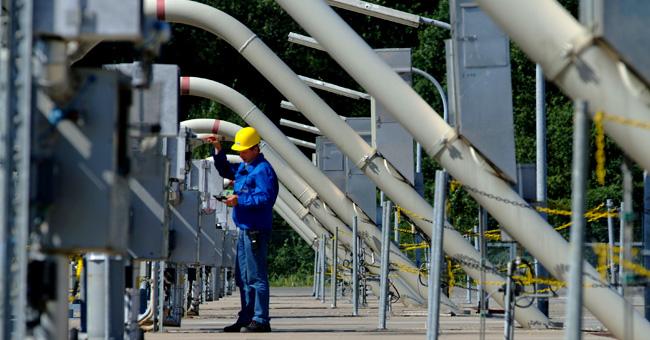
EUROPE HAS A MULTIPLICITY

Russia's drive to double its capacity to supply gas to northern Europe through construction of the Nordstream 2 pipeline does not lead Gazprom's great competitor, Norway's Statoil, to envisage a war between the two giants for European market share.
Rune Bjørnson, Statoil's vice president for European Policy and Regulatory Affairs, stressed two key points concerning European gas supply prospects. The first was that Europe has a multiplicity of suppliers and that, in terms of gas at least, its energy security is good; the second is that Statoil does not pursue a market share policy but instead focuses on the need for a predictable market environment to enable it to maintain current levels of piped gas deliveries to Europe for the next 20 years or so.
Bjørnson declined to address directly the issue of Russian supply – and thus the question of whether Statoil and Gazprom might yet get drawn into a price war. But he did make it clear just what the Norwegian giant's own policies were in regard to both its own export policies and the volumes it is looking to deliver.
"We've never had a target on market share," he told NGE. "The market has been big enough for us. So that has never been the way we have approached the market in the first place." Moreover, Russia's dominance could certainly not be challenged by Norway alone, Bjørnson indicated. "What is important is that no single supplier to Europe can substitute Russian gas. Russian volumes are too big for that," he said.
As for any challenge on price, Bjørnson had this to say: "Nobody has the same proximity to the market as we do. Norwegian gas is for all practical purposes part of the EU's indigenous supply, with our production literally at the EU's doorstep. We have well developed and flexible infrastructure, which would suggest that we are very cost competitive."
Speaking against a background of generally flat European consumption – although he acknowledged that in 2015 there had been a modest recovery from around 400 to around 420bn m³ – Bjørnson commented: "We see prospects for gas because (European) domestic production is declining, both in UK and Netherlands, and also in Germany. So even though demand is pretty flat the need for imports – if consumption stays at this level – is still there."
Overall, he considered, "Europe today has more supplies, or more diversified supply and more options for supply, than has ever been the case before. For Europe in general, security of supply is good."
However, he added, referring to the continued reliance of some countries in southern and eastern Europe on a single supplier: "If you look at different parts of Europe, the picture changes."
Nonetheless, he believed, Europe's security of supply had been considerably improved in recent years. "What Europe has done over the recent years in integrating the market is a huge success," he said. "But there is still a way to go in parts of eastern Europe."
Overall, however, European consumers "are less exposed to supply interruption, because the market has been more integrated and interlinked between the different member states, and because they have developed a significant capacity of regasification LNG receiving facilities."
Indeed, Bjørnson noted, "today, 40% of Europe's consumption can be covered by LNG if regasification facilities are fully utilised."
Europe also stood to benefit from an increased range of suppliers. "There is the Caspian. Caspian gas is coming in as a new supply region; the Mediterranean in due course."
He added: "If there ever was an issue related to security of supply, it's less now from a physical point of view." He did acknowledge that there might also be political considerations, but on this, he added immediately: "It's not for me to have a view."
Stability matters
The Statoil VP was emphatic both that while Norway retained a capacity to maintain supply at current level it did need a predictable environment in which to pursue its gas export programmes.
"The Norwegian government has just been prolonging the possible production profile for Norway from 2025 to 2035, and (that) keeps production pretty constant," Bjørnson said. "Based on production capacity, the likelihood is that we will stay around the current level," he added, with Norway producing about 100bn m³/yr and Statoil marketing around 70% of that.
Beyond that, Bjørnson declined to speculate, although he did make the intriguing comment that one should bear in mind that "only one-third of available gas resources in Norway, according to public sources, has been produced so far."
As for the kind of market Norway would be seeking to supply, Statoil's concern is the direction in which Europe is heading with regard to gas supplies at a time when the Norwegian giant is persistently stressing the role of gas as the most cost-affordable way of tackling man-made climate change by reducing carbon emissions.
Europe, said Bjørnson, "is the natural pipeline market we can access with our gas." But, he also had this to say: "As always, it takes two to tango. We have the resources. But we also need a market that asks or demands for this gas. And therefore it's very important, because of the long term nature of our industry, that there is certainty when it comes to the framework we're operating in. We can live in many worlds as long as we know which one we're living in."
-----
More:





